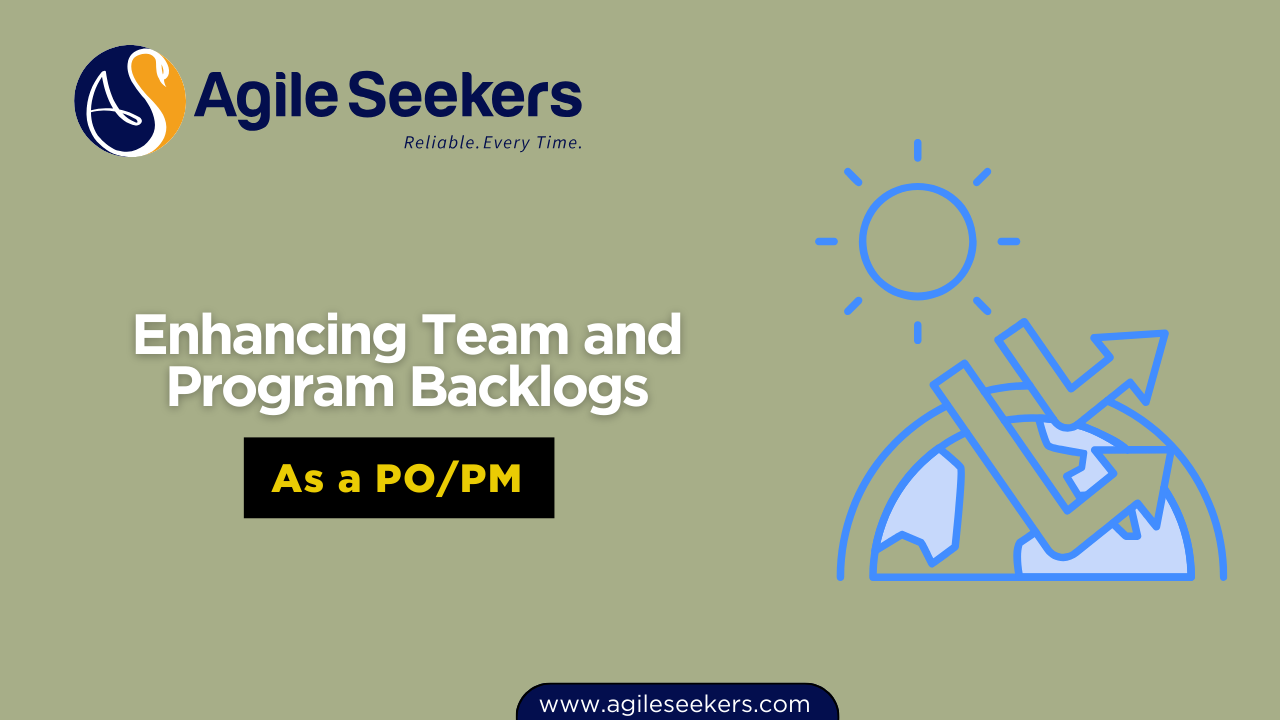The Role of POPMs in Enhancing Team and Program Backlogs

In the Scaled Agile Framework (SAFe), Product Owners and Product Managers (POPMs) hold pivotal roles that drive the alignment between strategic intent and team execution. One of their most critical contributions lies in backlog management—particularly grooming, prioritization, and refinement. This isn’t just administrative work; it’s strategic stewardship of the value stream. In this blog post, we’ll take a deep dive into how POPMs enhance both team and program backlogs, optimizing delivery and ensuring alignment with business goals.
Backlog Management: The Strategic Core of a POPM
At the heart of SAFe lies a well-maintained backlog. The SAFe POPM Certification equips professionals with the mindset and tools needed to manage this critical asset effectively. But what exactly does backlog management mean from a POPM perspective?
Backlog management isn’t about creating a laundry list of tasks. It’s about defining and refining the stories, features, and capabilities that drive business outcomes. POPMs act as value stewards, ensuring that the work teams take on is prioritized for impact, feasibility, and alignment with program objectives.
Grooming the Backlog: Preparing for Execution
Backlog grooming—or backlog refinement—is the continuous process of preparing user stories, features, and enablers so that teams can take action during iteration planning. A SAFe Product Owner Certification teaches professionals how to approach grooming with a strategic mindset.
Here’s how POPMs contribute during grooming sessions:
- Clarifying Requirements: POPMs work closely with Business Owners, Architects, and SMEs to break down Features into actionable Stories, ensuring the context and acceptance criteria are well understood.
- Defining Acceptance Criteria: They articulate clear, testable conditions of satisfaction so that teams know when a story is “done.”
- Splitting Stories: Large or ambiguous items are split into smaller, more manageable pieces without losing the core business intent.
Prioritization: The Art of Saying No
Prioritization is a balancing act between delivering value fast and maintaining a sustainable pace. POPMs use methods like WSJF (Weighted Shortest Job First) to sequence work that maximizes economic outcomes. Through the lens of SAFe Product Owner/Manager certification, prioritization is not just about choosing the next feature—it’s about trade-offs and economics.
Some best practices POPMs follow include:
- Collaborative Prioritization: Engaging with stakeholders during PI Planning and backlog refinement to ensure shared understanding of priorities.
- Economic Decision-Making: Using WSJF and Cost of Delay to make data-driven prioritization decisions.
- Customer-Centric Thinking: Regularly reviewing feedback and adjusting priorities to ensure continuous alignment with customer needs.
Refinement: The Engine of Flow
Refinement ensures that backlog items are INVEST-compliant—Independent, Negotiable, Valuable, Estimable, Small, and Testable. POPMs lead this effort in collaboration with Agile teams, Architects, and System Teams.
The refinement process typically includes:
| Refinement Activity | POPM Role |
|---|---|
| Story Mapping | Helps visualize user journeys and ensure story coverage across value flows |
| Backlog Health Checks | Assesses story readiness and aligns with team capacity and sprint velocity |
| Dependency Identification | Surfaces inter-team dependencies and resolves them before iteration planning |
Aligning Team and Program Backlogs
One of the unique aspects of SAFe is its dual-level backlog system—team and program. POPMs serve as the connective tissue between these layers. Their job is to ensure what’s on the team’s plate aligns with program objectives and the PI roadmap.
Through active participation in PI Planning, System Demos, and Inspect & Adapt sessions, POPMs synchronize priorities, validate progress, and adjust backlogs based on evolving business needs.
Effective Tools and Techniques for POPMs
To succeed in backlog management, POPMs rely on a toolbox of practical techniques and collaboration rituals:
- PI Planning: Ensures alignment across ART (Agile Release Train) and sets the tone for the upcoming iteration.
- Feature Workshops: Collaborative sessions to elaborate high-priority features before decomposing them into stories.
- Story Walkthroughs: POPMs guide the team through new stories during iteration planning to establish clarity and shared understanding.
Additionally, leveraging modern backlog tools like Jira Align, Rally, and VersionOne enhances traceability and collaboration across distributed teams.
Metrics to Measure Backlog Health
POPMs are also responsible for monitoring backlog health using quantifiable metrics:
| Metric | Significance |
|---|---|
| Backlog Readiness Rate | Percentage of backlog items ready for upcoming iterations |
| Story Acceptance Rate | Ratio of accepted stories to planned stories |
| Rework Ratio | Volume of stories requiring rework due to unclear acceptance criteria or inadequate grooming |
The Impact of Effective Backlog Management
When POPMs perform their roles effectively, the benefits ripple across the ART:
- Higher team morale due to clearer, actionable work items
- Faster time-to-market through optimized prioritization
- Improved stakeholder trust due to predictability and value delivery
Continuous Learning and Certification
To master these responsibilities, ongoing learning is key. SAFe POPM Training provides professionals with the tactical and strategic frameworks needed to manage backlogs in a scaled environment. It empowers individuals to move beyond task management and become strategic partners in delivering customer-centric solutions.
Conclusion
The role of POPMs in backlog management is not a behind-the-scenes activity—it’s a critical driver of Agile success. By refining, prioritizing, and aligning team and program backlogs, POPMs ensure that Agile Release Trains are on track, focused, and delivering value. For professionals ready to elevate their impact, pursuing a SAFE Product Owner Certification can be a game-changer.
For further reading, check out the official SAFe Backlog article on Scaled Agile and explore the concept of WSJF in this resource.




















